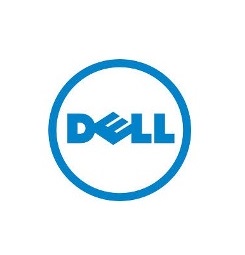Why You Can’t Ignore Building Data Management in 2022
 The world around us is becoming increasingly connected, which has only been further accelerated by the COVID-19 pandemic. Building owners and developers are reimagining and transforming their premises to create healthy indoor environments and adopt building-centric IoT offerings.
The world around us is becoming increasingly connected, which has only been further accelerated by the COVID-19 pandemic. Building owners and developers are reimagining and transforming their premises to create healthy indoor environments and adopt building-centric IoT offerings.
Building owners who understand emerging smart building technology trends and data management will be positioned at the forefront of innovation and be able to command higher valuations for their properties. The good news is that today’s sophisticated software uncovers opportunities and improves building performance for the long run, allowing building owners to reap the cost-saving benefits of analytics.
Imagine using smart management systems to continuously offer simple and meaningful information about what is happening inside a building. This data can be used to:
- Develop smarter maintenance protocols
- Increase efficiency
- Create a healthier building environment
- Lead to happier tenants
- Improve ESG tactics and reporting
- Work towards net zero goals
On the flip side, a building with no analytics in place leads to equipment breaking down, issues with temperature and air quality, costly downtime and massive inefficiencies. Without concrete data at your disposal, you don’t have the information you need to resolve these issues as quickly as possible (never mind detecting them in the first place). Simply put, if you’re not capitalising on data analytics in buildings in 2022, you’re not building or operating a truly smart building.
How to achieve a smart building through data analytics
Collecting the data is one thing, but its usefulness is only as good as its management and analysis. A robust system will simplify and analyse complex data patterns to conduct root-cause analysis, identify, and monitor equipment and energy use. This allows building managers to optimise their operations and prioritise opportunities to reduce costs, enhance sustainability, and improve comfort.
A smart building comprises a system of connected sensors transmitting data via a secure network to intelligent data analytics software that offers helpful insights for automation, maintenance, and efficiency opportunities. An example is Smarter Technologies’ SmarterView building data management platform, which provides powerful, real-time insights that allow you to optimise your operations effectively. Here’s how:
- Smart sensors and tags turn everyday objects into smart IoT devices
- Data from tags is transmitted wirelessly and in real time
- You can then command, control, monitor and manage your assets on SmarterView
This comprehensive asset management overview allows for immediate action, automation and analysis. Through smart data analytics, buildings benefit from system-wide opportunities for building a healthier environment, developing efficiencies, and improving comfort levels for tenants—all while reducing overhead expenditure.

The benefits of smart data analytics
A building management system that includes smart data analytics offers numerous benefits for building owners:
- A system-wide, high-level data capture of your entire estate and operations
- Ensuring a healthier building environment through air quality control, security and HVAC monitoring and automations
- The ability to balance energy load, saving energy and energy consumption during low occupancy or off-peak periods
- Eliminating waste through intelligent sensor data
- Offering guidance for performance improvements for individual assets
- Addressing equipment maintenance as actual need dictates (as opposed to relying on fixed schedules)
- Advanced automation capabilities and actionable results that reduce manual tasks, eliminate errors, and improve efficiency
Building the bottom line
Using smart data analytics can result in significant cost savings. So, where do these savings come from? Some examples include:
Air quality and temperature data
Along with revealing valuable information for creating a healthier, more comfortable environment for tenants, monitoring temperature and air quality also presents a prime opportunity for energy and cost savings. For example, a HVAC system can control temperature according to occupancy, reducing energy wastage from empty rooms being cooled or heated.
Eliminating waste
Smart technology combined with data analytics can enable many forms of waste elimination. For example, sensors can be used to monitor building necessities such as office supplies and break room inventory, ensuring that these are only replenished when necessary. Building managers can also use the data to identify and get to the bottom of unusual usage patterns.
Transforming maintenance and repairs
Preventive maintenance is an essential aspect of efficient building management. But although manual routine maintenance is important, it’s not always truly necessary, and thus not always the most efficient use of time and resources. An alternative is to use smart data analytics to monitor and identify the need for maintenance before breakdowns happen. This extends the life of your important assets, prevents costly downtime, and also allows for more efficient maintenance procedures.
Energy load balancing in action
One of the most useful applications of building data management in the current climate is effective energy management. For example, smart data analytics enables energy load balancing and phase readings that enable you to reroute power to a battery between units to balance your electricity consumption more efficiently.
IoT company Smarter Technologies used data analytics software to conduct an initial assessment of three client sites to show where costs can be recouped with proper energy management. All clients were experiencing wasted energy. One client, in particular, was wasting 46% of its total energy use in 24 hours, amounting to 34% of its annual profit.

By using the data to rebalance the load for these sites, Smarter Technologies was able to help clients unlock further opportunities, such as:
- EV charging stations utilising excess power that would otherwise go to waste
- Battery storage of excess energy, which can be used to offset higher energy costs down the line
- New/better equipment using recovered costs
- Improved maintenance work using recovered costs
The answer lies in analytics
Today’s cloud-based systems deliver detailed, real-time reporting on all aspects of network activity. This performance data is powerful. It can be used to improve efficiency, enhance the comfort of the occupants, reduce energy usage, reduce costs, and help organisations future-fit their operations. Data is a key commodity in any business; better visibility of business operations at any level has proved time and again to enable management to make better decisions.
Authored by:- Mr Matthew Margetts, Smarter Technologies Group Director of Sales and Marketing
(The views expressed in this article are by – Mr Matthew Margetts, Smarter Technologies Group Director of Sales and Marketing. Technuter.com doesn’t own any responsibility for it.)



